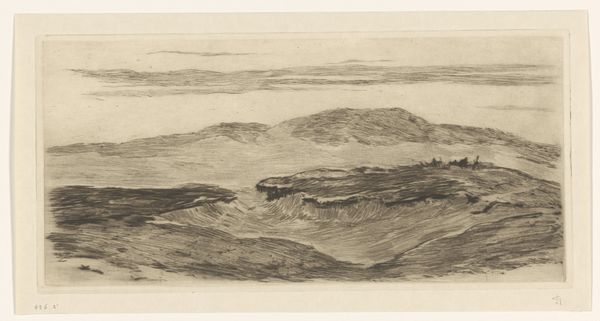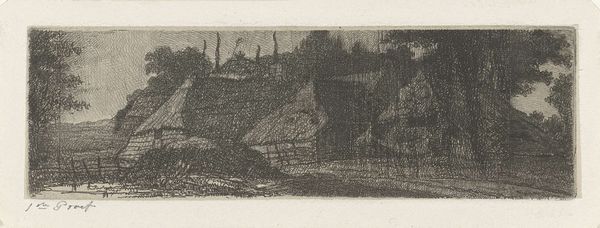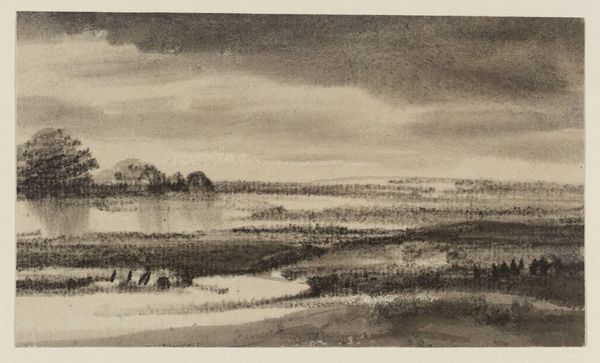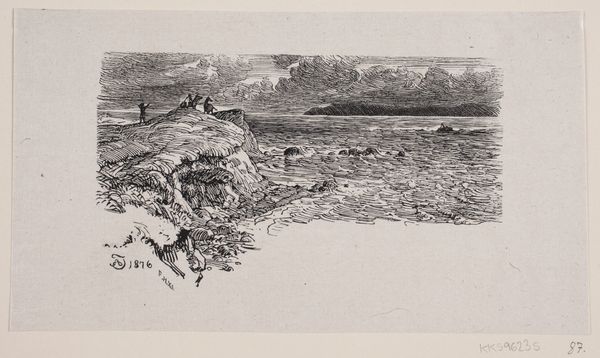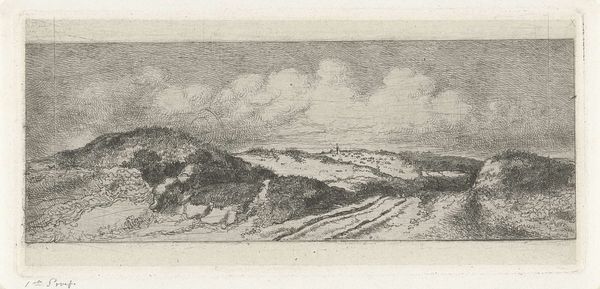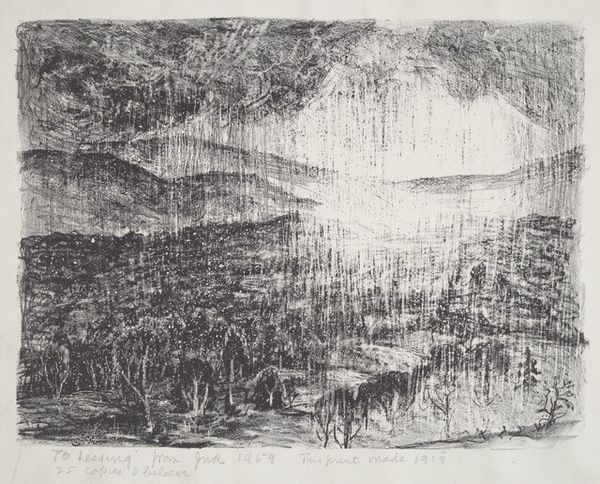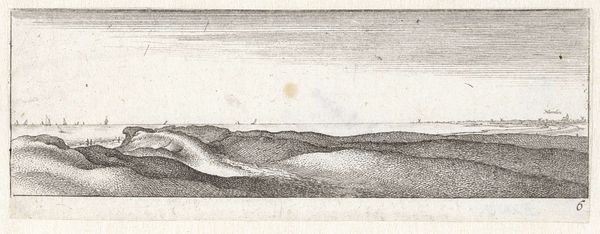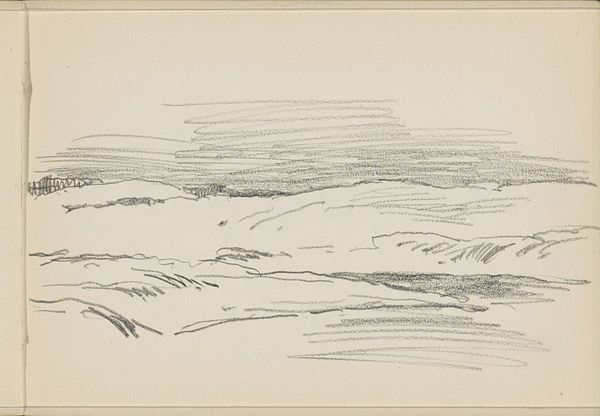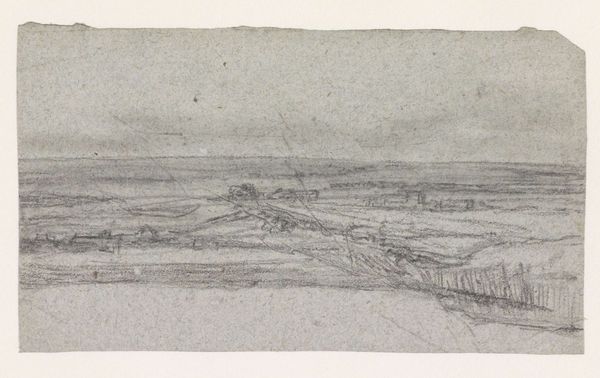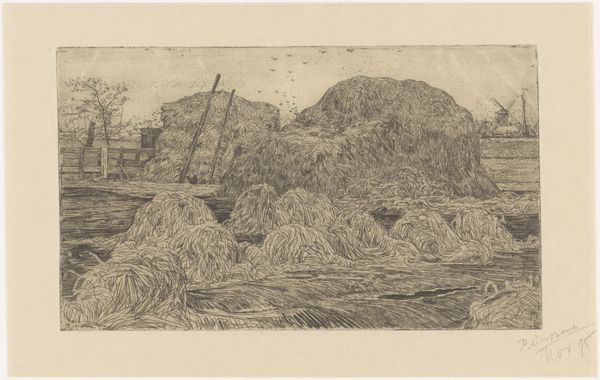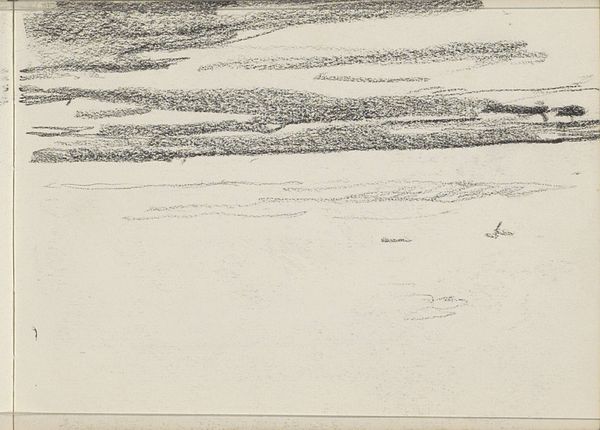
drawing, pencil
#
drawing
#
amateur sketch
#
light pencil work
#
pencil sketch
#
incomplete sketchy
#
landscape
#
personal sketchbook
#
pen-ink sketch
#
pencil
#
sketchbook drawing
#
pencil work
#
sketchbook art
#
realism
#
initial sketch
Dimensions: height 66 mm, width 199 mm
Copyright: Rijks Museum: Open Domain
Curator: This is Jacobus Ludovicus Cornet’s “Landschap rond Amersfoort,” likely created sometime between 1825 and 1882. It’s currently held in the Rijksmuseum. It’s rendered in pencil, a study of a landscape. Editor: There's a haunting quality to it, despite being a simple pencil drawing. It looks almost like a dreamscape, the dark hills rolling under a sky streaked with faint clouds. The trees in the middle ground add a feeling of human presence. Curator: It’s intriguing to think about the kind of pencil Cornet would have used, where it was sourced from, and how it was manufactured. The subtleties in the shading suggest a certain grade of graphite and paper texture that allowed for the light pencil work that we see here. It invites questions about the accessibility of such materials. Editor: Absolutely, but it’s also worth noting that 19th-century Dutch landscape art often reflects broader societal shifts. As urban centers grew, there was this increased longing for the agrarian and untouched countryside. Think of the Romantic movement, the quest to escape industrialized life! Does this quick sketch speak to this yearning? Curator: The texture created by the pencil work evokes a sense of manual labor. The artist is making the landscape present for consumption and study, and that’s where it gets really fascinating – the role of the hand, the artist as worker. What was Cornet's relationship to the land? Was he connected to agricultural labor or merely an observer? Editor: Perhaps he found respite there, escaping social pressures in Amersfoort. A place where one could find peace away from gendered expectations, or other societal constraints. Maybe the sweeping lines are not only about observation, but also about liberation. Curator: Considering that Cornet was predominantly known as a painter of portraits and genre scenes, this landscape sketch feels like a departure or, at least, a private exercise. It provides a tangible connection to his practice, his means of working. Editor: True, viewing it as a window into his thought processes and his experience adds a richer, multi-layered appreciation. This drawing transcends being a mere landscape study. Curator: Indeed. The labor in it is so subtly apparent that one can forget the artistic work needed to record these "idle" landscape views. Editor: And considering the possible sociopolitical background informs its emotional impact profoundly. I am truly happy I had a chance to engage in a conversation on the themes present within "Landschap rond Amersfoort" today.
Comments
No comments
Be the first to comment and join the conversation on the ultimate creative platform.
